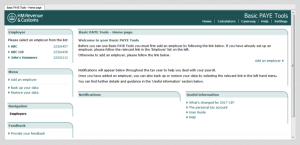One of the biggest challenges of working in matrix organizations is the lack of a clear hierarchy. Work tends to take place within teams representing various departments or business functions, and each team member is an expert in a particular area. To push your initiative forward, you need the support of all these key players, but you may not have authority over any of them.
In this environment, you need to gain commitment from your team, rather than mere compliance.
Certain leadership tactics may be sufficient for prompting immediate action from others when you’re the boss, but they tend to be disregarded when used within a team of your peers. Furthermore, they tend to be perceived in a negative light, making it more difficult for you to gain and maintain the respect of your team in the long term. Here are three leadership tactics to avoid, particularly when working in a matrix, and what to use instead.
1. Legitimizing
What It Is: Relying on policy, rules or position authority to influence others. Legitimizing can also take the form of a prior precedent set by someone with authority.
How It Sounds: “We can’t use discounts. Our CEO has made it clear this isn’t the way we do business so you’re going to have to come up with another way to boost sales in this area.”
Why It Fails: While this tactic may be effective when you have legitimate authority that is unknown or unclear to others, its use tends to inhibit conversation and rarely works in situations where you need other’s full commitment. The over use of this tactics may also cause others to perceive you as dogmatic, a poor listener, or overstepping your boundaries.
What To Use Instead: If you lack formal authority but have established trust and credibility within the group, try reasoning. Using logic and factual evidence to support your request is the most common influencing tactic among successful leaders and tends to be one of the most effective. For example, you could provide data on other alternatives that have boosted sales in the past or data that shows the negative impact previous discounting has had.
2. Coalition
What It Is: Enlisting the help or support of others as a way to influence someone to do something. The idea is that if they support the proposal or the change, others will be convinced to go along with it.
How It Sounds: “The operations and safety teams are already on board with the new system. I’ve asked a representative of each group to meet with us to discuss what they found to be the advantages of the new system and what they did to ensure a smooth transition.”
Why It Fails: With this tactic you are relying on thirds parties to make a strong case for the change or proposal and they may not meet your expectations. In addition, coalition tactics can be perceived as one group of people pushing an idea or change onto others before the others are ready to consider it or if they don’t agree.
What To Use Instead: Consulting, or asking another person to provide a professional recommendation or suggestion for how the task may be accomplished, is more likely to have favorable results. For instance, you could ask the person or group that will be most affected by the change to explain their concerns and suggest modifications to the plan or a more realistic alternative.
3. Pressuring
What It Is: Using demands, threats, frequent checking or persistent reminders to influence someone to do something.
How It Sounds: “Everyone has completed their part of the report. If you don’t have your part done by Friday, I’ll have to explain to my boss where the bottleneck is.”
Why It Fails: No one wants to feel threatened. This approach is likely to cause others to shut down, withdraw or rebel.
What To Use Instead: When the pressure to accomplish something is mounting, offer to provide relevant resources or assistance to make it easier for someone to support the change or get the job done. This is known as collaborating. For example, you could ask the person what information he or she still needs and find out what you can do to help them obtain it.
Reasoning, consulting and collaborating are three of the four most common and most effective influencing tactics, according to OnPoint’s own research on more than 220 leaders.
Recognizing the influencing tactics you use most often and making a conscious effort to use them strategically can help you sharpen your skills and accomplish more.
To learn more about how to use influencing tactics to ensure better collaboration within a cross-functional team, download this quick guide, “Influencing In A Team: How to Get A Roomful of Leaders to Get Things Done.”
(200)
Report Post





